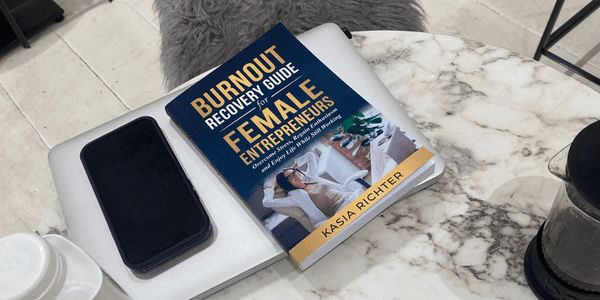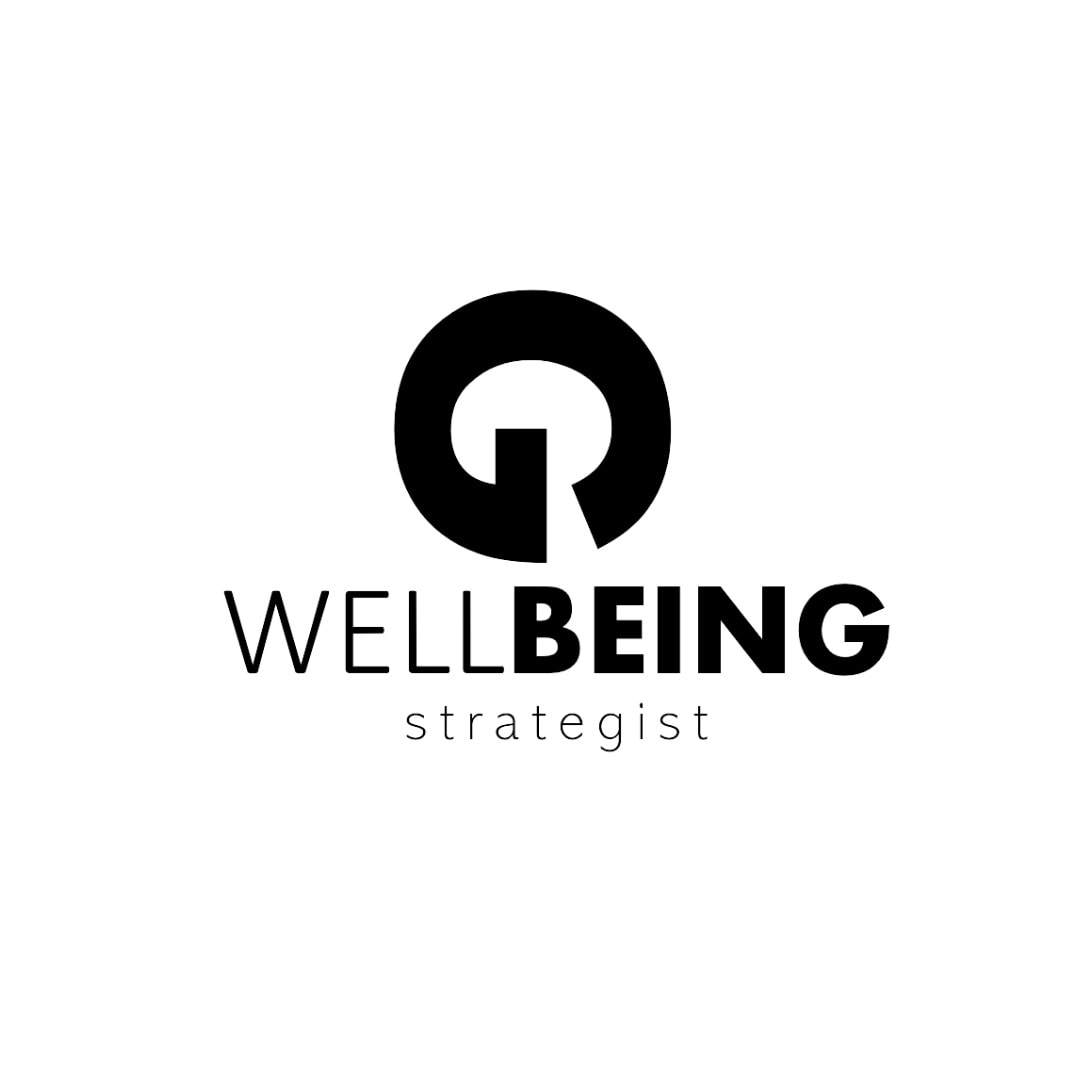Burnout has become a common issue in today’s fast-moving work world. With a lot of tasks to handle and high expectations to meet, many professionals find themselves exhausted both mentally and physically. Burnout is a serious problem, where a person feels very tired, loses interest in their job, and struggles to handle their daily work. It is mostly caused by long-term stress and high workload.
Spotting the early signs of burnout is very important. It helps individuals to act quickly and manage the situation before it gets worse. When you notice burnout signs early, you can take steps to relax, manage stress better, and improve your work-life balance. This is not only good for individuals but also for companies wanting to maintain a good working environment and high productivity levels.
In this blog, we will look at how to recognise the burnout, understand its causes, and learn ways to manage it effectively. Knowing the first signs helps in taking timely action to improve well-being and create a healthier work environment. By understanding burnout better, you can take steps towards a more balanced life and a more supportive work setting.
Table of Contents
Understanding Burnout
Burnout is a term that has been garnering much attention, especially in discussions surrounding mental health and workplace wellness. But what exactly is burnout? Let’s delve into a more precise definition and the various types that one might encounter.
Definition of Burnout
Burnout is defined as a state of emotional, physical, and mental fatigue that is often resulted from prolonged or severe stress, particularly from workplace pressures. It occurs when individuals feel overwhelmed, unable to meet constant demands, and cease to function effectively in their personal and professional lives. According to the World Health Organisation, fatigue is specifically tied to our experiences in the workplace and is not classified as a medical condition but rather an “occupational phenomenon.”
Types of Burnout
While the term ‘burnout’ often paints a broad stroke, it encapsulates several specific types, each stemming from different sources of prolonged stress. Understanding these can better equip individuals and organisations to address and prevent fatigue effectively.
Job Burnout:
- This is the most common type and is usually linked to dissatisfaction or stress in the workplace. Work-related stress, unrealistic expectations, or a heavy load often contribute to job burnout.
Compassion Fatigue:
- Often experienced by individuals in caregiving professions or those who work in trauma-exposed environments. It reflects the cost of caring for others in emotional pain.
Caregiver Burnout:
- This occurs in individuals who are taking care of family members or loved ones, often with chronic illnesses or disabilities. The prolonged stress of caregiving can lead to a state of physical, emotional, and mental exhaustion.
Burnout isn’t solely confined to work-related stress, although a significant portion arises from occupational settings. It’s essential to recognise that burnout is not caused solely by challenging responsibilities but can also stem from a lack of control or support in the workplace or caregiving environment.
Exhaustion is often a sign that fundamental human needs are not being met, leading to a depletion of emotional and physical resources. It presents a pressing case for the dire need for a balanced approach to work, relationships, and personal well-being to foster a conducive atmosphere, whether at the workplace or home.

Causes of Executive Burnout
Being in an executive position comes with a hefty set of responsibilities and expectations. The pressure to perform and deliver can be overwhelming, and if not managed well, can lead to burnout. Here are some primary causes of executive burnout:
Workload:
- Executives often deal with a heavy load which includes numerous meetings, deadlines, and high expectations. When the workload is relentless, it leaves little room for rest, leading to exhaustion and burnout over time.
Work Environment:
- The environment in which executives operate plays a critical role in their mental and emotional well-being. A toxic or unsupportive work space can escalate stress levels, contributing significantly to burnout.
Work Demands:
- The high demands of an executive role are challenging. Managing teams, meeting targets, and ensuring organisational success are tasks that require a lot of time and effort, which can be draining.
Work or Home Demands:
- Sometimes, the pressure from work extends into normal life, disrupting the delicate balance between work and home. Similarly, personal or home issues can add to the stress when coupled with demanding work responsibilities.
Work Schedule:
- Long hours and a hectic work schedule without adequate breaks or downtime can lead to fatigue and stress, which are precursors to burnout.
Stressful Job:
- Being in an executive position is inherently stressful. The constant pressure to perform and make critical decisions can take a toll on one’s mental health.
Work Time:
- The inability to disconnect from work, especially in a world where digital connectivity blurs the boundaries between work time and personal time, can contribute to burnout.
Burnout isn’t caused solely by stressful work or a hefty work load. Other factors, both personal and organisational, play a significant role in contributing to burnout. Understanding these factors can help organisations and individuals create a healthier work space and find better ways to manage stress and prevent burnout.
Early Signs of Burnout
Executive burnout can be triggered by numerous factors in the work space. Recognising the first warning signs of exhaustion is crucial to addressing the problem before it escalates. Here are some of the initial symptoms that may signal burnout is on the hor ison:
One of the most noticeable first warning signs is exhaustion. You might find yourself feeling tired most of the time, even after a good night’s sleep. The tasks that were once manageable now may feel overwhelming, causing mental fatigue that’s hard to shake off.
An increased mental distance from one’s job is another sign. If you start to notice feelings of negativism or cynicism related to the work you’re doing, it’s a red flag. You might feel disconnected or find it hard to care about your responsibilities, your colleagues, or the organisation’s goals. The enthusiasm and optimism that once drove your professional endeavours might be replaced by a growing disenchantment.
Lastly, decreased professional efficacy is the first symptom of burnout. If tasks that once felt easy or routine now seem insurmountable, or if you don’t feel as competent or productive as you used to be, it’s a concerning sign. The mental fatigue accompanying burnout might hinder your ability to perform at your usual standard, and you might feel like your professional abilities are dwindling.
The journey towards burnout is a gradual one, and the earlier you spot these warning signs, the better you can manage and mitigate the risks. Paying attention to how you feel both physically and mentally, and assessing your attitude towards the work you’re engaged in are vital steps towards identifying and addressing burnout in its initial stages.

Symptoms of Burnout
Burnout, a state of emotional, physical, and mental exhaustion caused by excessive and prolonged stress, often emerges from one’s job. The physical symptoms of burnout include chronic fatigue, a sharp decline in energy making one feel drained and susceptible to illnesses. Insomnia often accompanies this fatigue, where even after a full night’s sleep, fatigue pervades. Loss of appetite is also among the common signs, which could further affect one’s physical and mental health.
On the emotional front, individuals might be experiencing a myriad of feelings such as anxiety, depression, and irritability, often leading to emotional exhaustion. The once intriguing aspects of one’s job might now provoke anxiety or disinterest, making it a chore to sustain enthusiasm and focus.
Behaviorally, burnout manifests in a withdrawal from responsibilities, a sign one might be experiencing job burnout. There’s also a tendency to isolate oneself from others, reflecting an aversion or lack of energy to engage in social interactions. These behavioural changes are often detrimental, building up the wall between an individual and their environment further.
The signs and symptoms discussed above encapsulate three symptoms categories: physical, emotional, and behavioural, painting a fuller picture of what someone may be experiencing when burnout sets in.

Consequences of Job Burnout
The ripple effect of job burnout extends well beyond the personal realm, infiltrating professional relationships and work performance. The incessant stress and exhaustion emanate from the individual, often straining personal and professional relationships. The inability to perform at one’s peak due to mental and physical fatigue significantly impacts performance at work, potentially leading to negative evaluations, job dissatisfaction, and a pervasive sense of failure.
Work burnout also severely impinges on one’s productivity. The mental fog and physical lethargy associated with workplace burnout deter one from accomplishing tasks efficiently, which might also translate into missed deadlines and a dip in overall work performance.
One of the harsh consequences of job burnout is its effect on an individual’s health. The duress stemming from a relentless work schedule can birth both physical and mental health problems. Mental health issues such as burnout and depression often become bedfellows, each fueling the other in a vicious cycle.
Moreover, the effects of burnout extend to physical health, possibly manifesting in cardiovascular diseases, a weakened immune system, and other health conditions. In summation, the consequences of job burnout are multi-faceted, affecting not only an individual’s professional life but their personal wellbeing and relationships profoundly.

Stress and Burnout: The Underlying Connection
The trail from chronic stress to burnout is often a silent but slippery slope. Stressors, especially in a demanding work space, can act as fuel to the fire of burnout. When one is constantly exposed to stressors, be it high workloads or interpersonal conflicts, the risk of burnout amplifies significantly. Chronic stress gradually wears individuals down, eroding their mental and physical resilience, making it easier to experience burnout.
As stress morphs into a constant companion, individuals may find themselves on the verge of extreme tiredness, with the potential to develop burnout. Unlike normal stress, which can catalyse action and motivate individuals, chronic stress associated with burnout tends to debilitate one’s ability to cope with the demands of daily life. Thus, a vicious cycle ensues where continuous stress compounds, leading to severe burnout, which in turn, makes handling stressors even more daunting.
Addressing the symptoms of stress at this stage is vital to nip the burgeoning issue in the bud. Stress management emerges as a preventive shield against the onslaught of burnout. Incorporating stress-reducing techniques such as mindfulness, exercise, and regular breaks can markedly reduce the risk of burnout. By managing stress effectively, individuals can foster a sustainable work space that supports rather than undermines their wellbeing.
Balancing Act: Maintaining a Healthy Work-Life Balance
In the modern era where the lines between professional and personal life often blur, especially with the advent of remote work, maintaining a healthy work-life balance has become paramount to prevent burnout. Achieving this balance requires a holistic approach that encompasses time management, delegation, and leisure activities.
Effective time management is pivotal to create a demarcation between work and personal life. Designating specific work hours, even in a remote setting, and adhering to them helps in leaving work behind post work-hours. It enables individuals to detach from work, providing a necessary respite to rejuvenate.
Delegation, on the other hand, alleviates the burden of overwhelming responsibilities. By delegating tasks efficiently, individuals can prevent work overload, thus reducing the strain that often leads to exhaustion. It’s an essential step toward managing work demands effectively.
Moreover, engaging in leisure activities is indispensable to achieve balance in your life. Whether it’s pursuing a hobby, exercising, or spending time with loved ones, leisure activities act as a buffer against stress and provide a healthy outlet for relaxation.
Promoting a balance between work and personal life not only enhances productivity but also significantly lowers the propensity towards burnout. It fosters a fulfilling life where work and personal satisfaction coexist harmoniously, nurturing both professional success and personal wellbeing.
Strategies to Deal with Burnout

In dealing with burnout, the first step often involves identifying and addressing the underlying causes. It is imperative to recognise burnout and its manifestations within your life. This self-awareness enables one to pinpoint the stressors, be it a toxic work space, unrealistic expectations, or lack of social support, that might be contributing to their burnout. It is through understanding these causes that steps can be taken to alleviate the problem.
Seeking support is a pivotal step in the journey to deal with burnout. Engaging with colleagues, friends, and professionals provides a supportive network that can offer insights, encouragement, and sometimes professional guidance to help yourself overcome fatigue. Being open about your struggles enables others to understand and assist in your recovery process.
Furthermore, incorporating self-care routines is integral to managing burnout symptoms. Relaxation techniques such as mindfulness meditation, yoga, or even simple breathing exercises can create a buffer against stress. Regular physical exercise is also a key component that promotes both mental and physical health. Additionally, adhering to a balanced diet ensures your body receives the necessary nutrients to function optimally. These self-care measures are vital steps you can take to combat burnout and promote overall well-being.

Recovering from Burnout: A Path to Resilience
Recovering from burnout is a process that requires a holistic approach, touching various areas of your life. Initially, it’s about assessing and adjusting personal and professional goals to ensure they are realistic, achievable, and aligned with your values. This reflection may unveil types of burnout like compassion fatigue or caregiver burnout which are tied to specific roles and responsibilities.
Developing coping strategies is central to building resilience. Coping strategies can range from stress management techniques to establishing healthy boundaries in work or whatever domain is affected by burnout. It’s about building a toolkit of resources and strategies to promote mental well-being and ensure that you are physically and mentally equipped to handle the demands of your life.
Emphasising the importance of a supportive work place cannot be overstated. A nurturing and understanding work place can significantly impact the recovery process for people who are experiencing excessive fatigue. Moreover, a supportive network can aid in recognising depressive symptoms or other signs of distress early on. It’s beneficial to have a burnout inventory to monitor symptoms and track recovery.
Health and well-being should always be a priority, as excessive fatigue can affect every facet of your life. The journey from recognising fatigue, seeking support, and ultimately recovering from fatigue is a testament to personal and professional growth. It propels individuals towards a balanced life where they are not just surviving, but thriving amidst the challenges.

The Happy CEO
The Happy CEO executive burnout program is an innovative approach to equip executives, especially those at the c‑level, with tools, strategies, and resources to manage stress, promote well-being, and maintain a balanced approach to work and life. Designed with the unique challenges and pressures of leadership roles in mind, the program delves deep into the intricacies of executive responsibilities, offering solutions that resonate with the experiences of those at the helm of organisations.
Program Highlights
- Personalized Coaching Sessions: These sessions focus on understanding the individual challenges faced by the executive and devising tailored strategies to address them. Through one-on-one interactions, executives gain insights into their stress triggers and learn how to mitigate them effectively.
- Work-Life Balance Workshops: These workshops emphasise the importance of maintaining a clear boundary between professional and personal lives. They offer actionable strategies to achieve this balance, ensuring that executives don’t feel overwhelmed by their roles.
- Mindfulness and Meditation Training: Recognizing the benefits of mindfulness in reducing stress, the program incorporates meditation and mindfulness techniques. Executives are taught how to use these tools to centre themselves, making them more resilient in the face of work-related challenges.
- Networking and Peer Support: One of the invaluable aspects of the Happy CEO Program is the opportunity for executives to network with peers who face similar challenges. By sharing experiences and solutions, participants can benefit from collective wisdom and support.
- Resource Kit: Participants are provided with a comprehensive resource kit, including books, digital tools, and reference materials, all aimed at equipping them with knowledge and strategies to combat burnout.
Impact
Companies that have integrated the Happy CEO Program have reported marked improvements in their executives’ well-being, job satisfaction, and overall productivity. The program not only addresses burnout but also proactively promotes positive mental health, ensuring that executives lead their teams with renewed vigour and clarity.
By investing in executive burnout programs like the Happy CEO, organisations affirm their commitment to the well-being of their leadership, acknowledging the pivotal role they play in steering the organisation’s success. It becomes a testament to the fact that when leaders thrive, so does the entire organisation.

Conclusion
The voyage through understanding and combating burnout is an eye-opener to the delicate intricacies of human resilience and the impact of our work and lifestyle choices on our overall well-being. The importance of recognising the early signs of burnout cannot be stressed enough. It’s the initial step towards averting a potentially debilitating condition, paving the way for proactive measures that nip the problem in the bud before it festers into a chronic issue. Early recognition coupled with action could be the buffer that stands between stress and a full-blown burnout.
Taking action might sometimes entail seeking professional help, a step that is highly commendable and often necessary. Professionals can provide coping strategies, identify underlying issues, and even help in creating a recovery roadmap. It’s a pathway to regaining control, revitalising not only one’s professional life but personal life as well.
Furthermore, cultivating a balanced and supportive work place is a collective endeavour that can significantly deter the onset of fatigue. An environment that promotes open communication, values its employees, and emphasises work-life balance is not only a deterrent to fatigue but also a catalyst for productivity, job satisfaction, and overall mental well-being.
Preventing and overcoming burnout is not a solo journey but a communal effort. It’s about creating cultures, both in our personal and professional lives, that nurture rather than deplete, that support rather than isolate, and that promote health and satisfaction above all else. The dialogue around burnout, its prevention, and recovery, is a dialogue of hope, reassurance, and the continuous pursuit of a balanced, fulfilling life.






